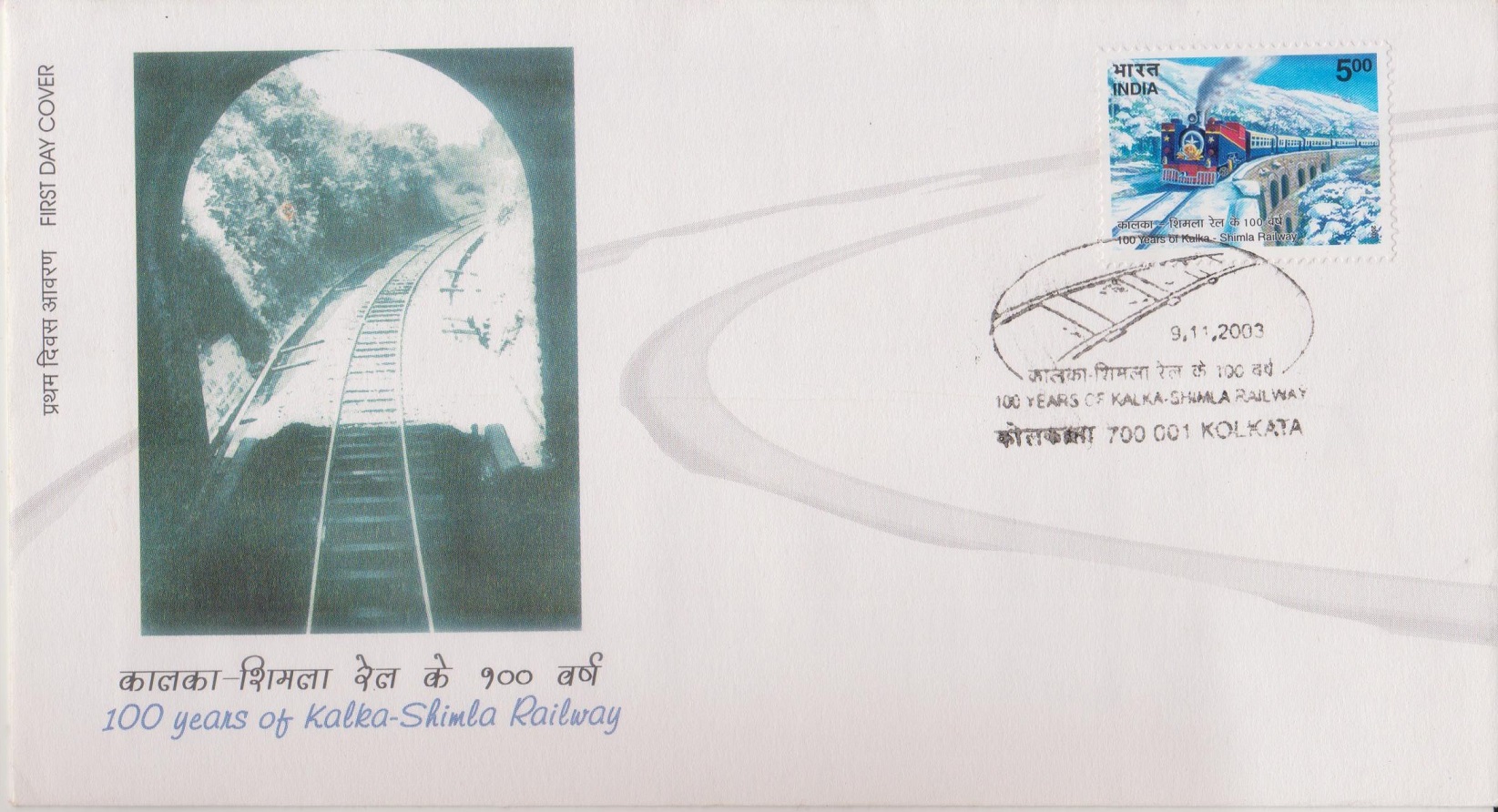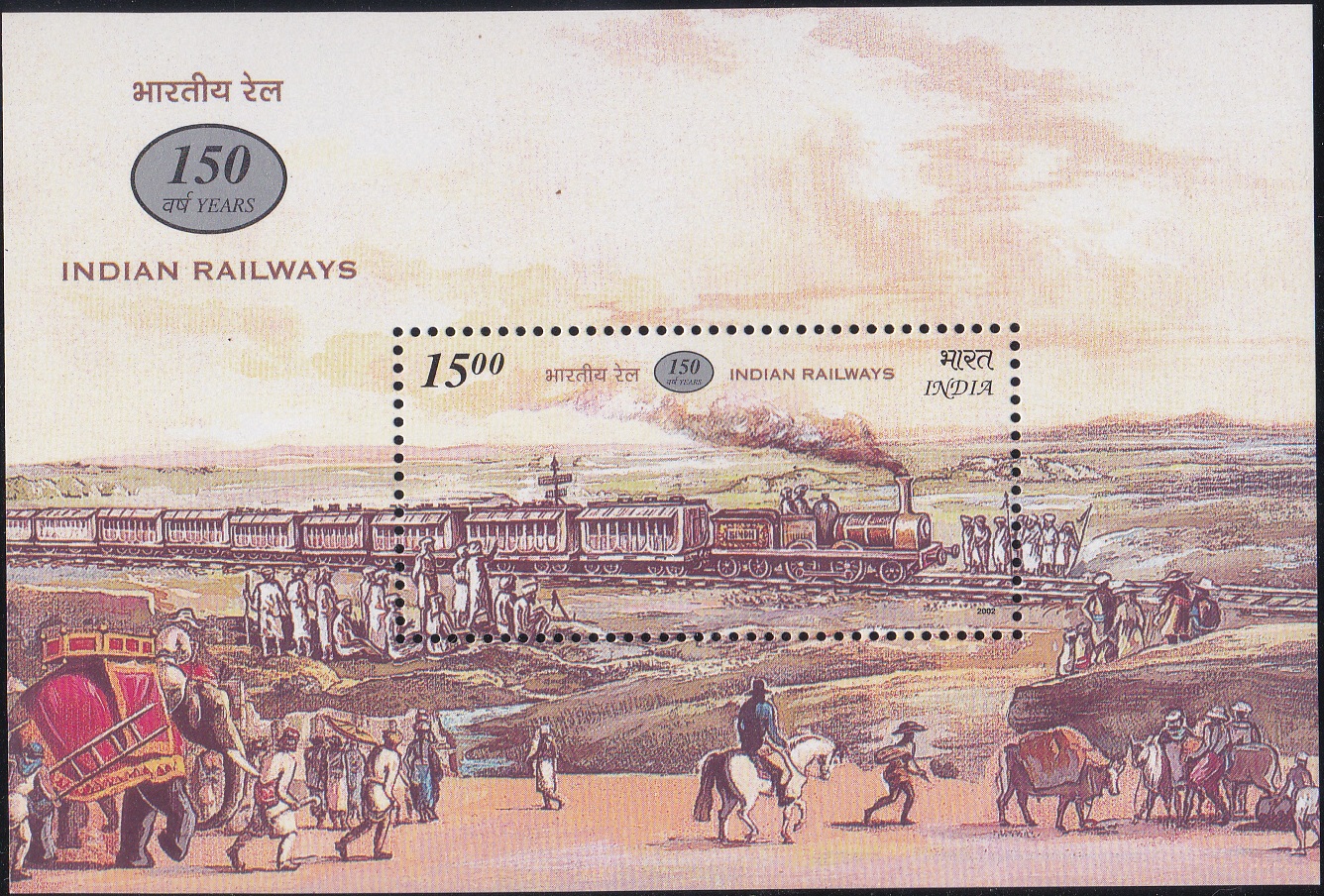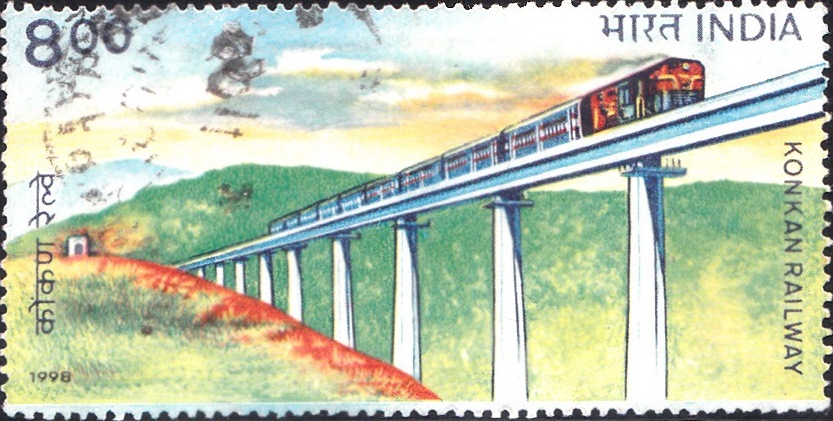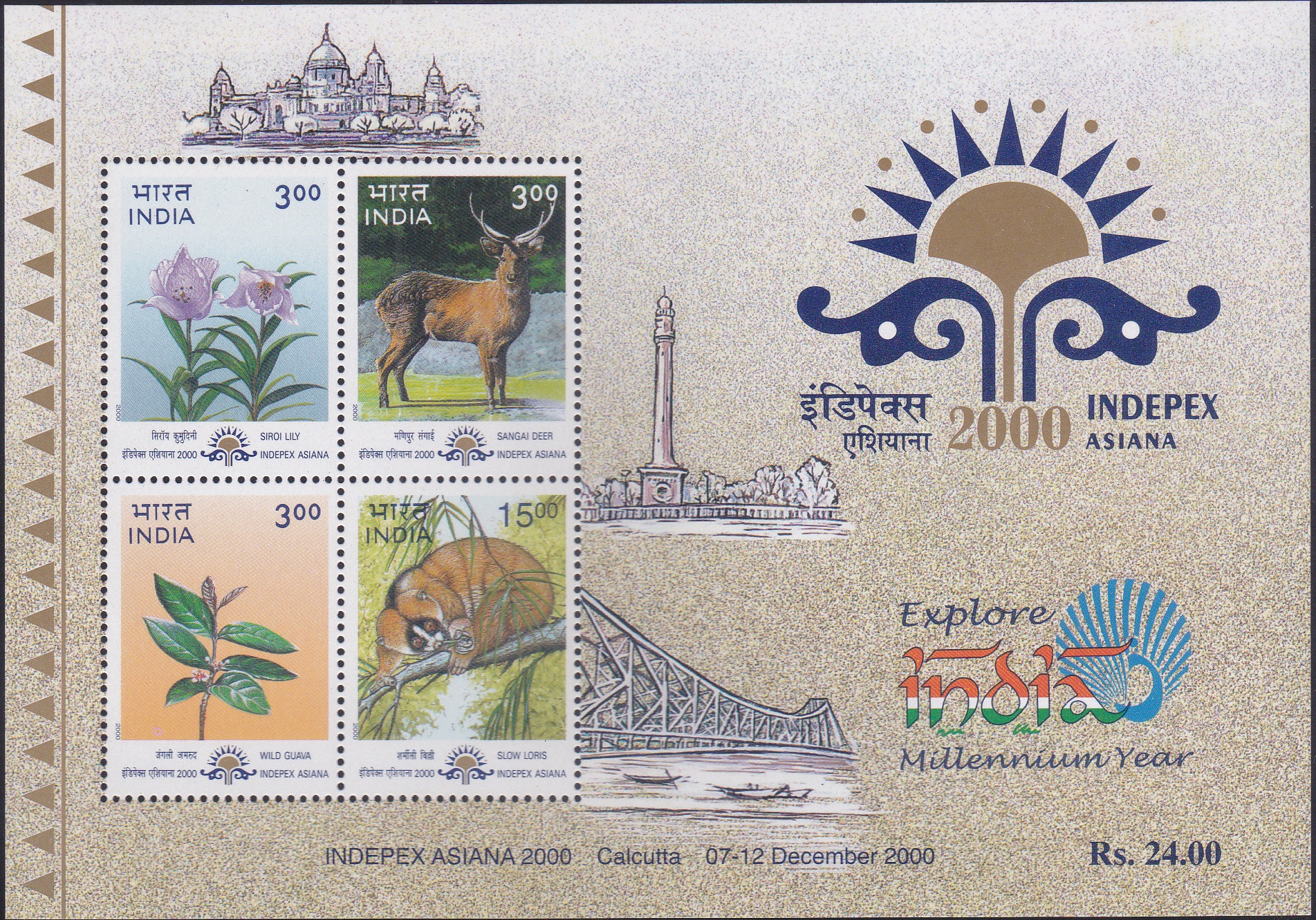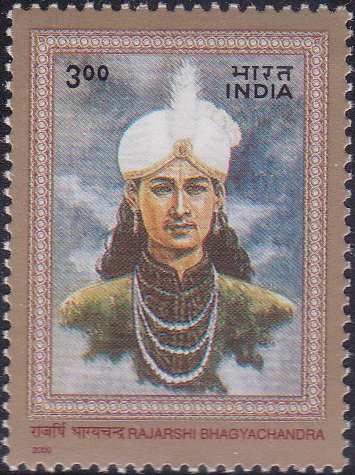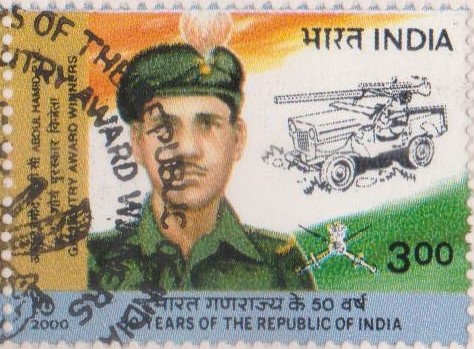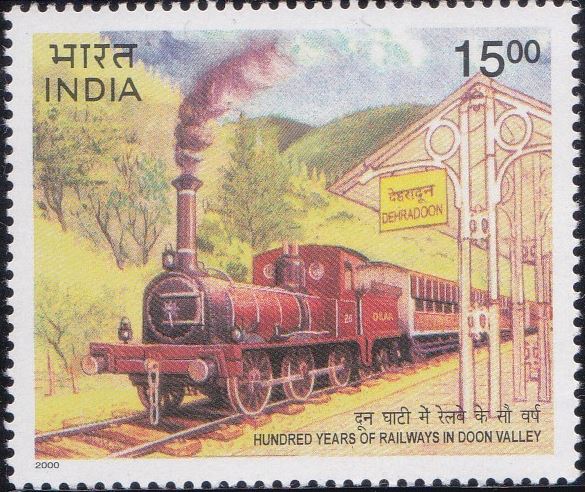
Railways in Doon Valley
A commemorative postage stamp on the 100 Years of Railways in Doon Valley at Dehra Dun, Uttarakhand :
Issued on May 6, 2000
Issued for : The Department of Posts is happy to issue a commemorative postage stamp on the occasion of the centenary of the Railway in Doon valley, in recognition of the contribution of the railways to the social, cultural and economic life in the valley.
Design : The Doon Railways having a length of 51.26 kms with reserve forests, sharp gradients and two tunnels completes 100 years since it has been opened to traffic in the valley. The department of posts marks the centenary celebration with this stamp issue. The first day cover design shows the present Shatabdi Express which runs on this track.
Credits :
Stamp & FDC : Sankha Samanta
Cancellation : Alka Sharma
Type : Stamp, Mint Condition
Colour : Multi Colour
Denomination : 1500 Paise
Overall size : 4.05 x 4.80 cms.
Printing size : 3.60 x 4.40 cms.
Perforation : 13.5 x 13.5
Paper : Matt Chromo
Stamps Printed : 0.7 Million
Number per issue sheet : 40
Printing Process : Photo Offset
Printer : Calcutta Security Printers Ltd.
About :
- The Doon Valley, measuring about 75 kms in length and 25 kms in breadth, is famous as a tourist destination on account of its salubrious climate. The valley accommodates many prestigious national institutions like the Forest Research Institute, Indian Military Academy, Rashtriya Indian Military College and the headquarters of Surveyor General of India and Oil and Natural Gas Commission apart from a large number celebrated educational institutions. In the latter half of nineteenth century, despite laying of railway line upto Hardwar and Saharanpur, access to the valley and the nearby Mussoorie hill station was extremely difficult on account of the steep Shivaliks skirting the valley from south east to north west. The tourists travelled upto Saharanpur by rail and used bullock or horse driven carts for Dehradun or upto Rajpur from where ponies or dandies carried them to Mussoorie.
- Railway line between Hardwar and Dehradun was sanctioned on 18th November 1896 and the contract for the construction and working of Hardwar–Dehra Railway between the Secretary of State and the Hardwar–Dehra Railway Company was signed on 26th March 1897. Land was made available free by the government. Work on the track and buildings was completed by early 1900 at a cost of about Rs. 26 lakhs and the line was opened for traffic on 1st March 1900. Opening of railway led to prosperity of Dehradun on account of custom and from the immensely larger number of people and greater quantity of goods that could be brought into the valley than was hitherto possible. Mussoorie and its adjoining areas also gained substantially from the far easier access.
- Operations of line were entrusted to Oudh and Rohilkhand Railways. The line generated profits instantly and produced more than 3% of net earnings on the total capital employed in 1900 in the first 10 months of operation. Profits went up to 12% in 1920-21 of the total capital outlay on the project which had gone upto Rs. 31 lakhs by that time.
- Railway having a length of 51.26 kms passes through the dense forest, now a reserve forest known ‘Rajaji National Park’, endowed with rich flora and fauna. The line has 15 curves, the sharpest being 4½ degree and ruling gradient of 1 in 75. There are two tunnels having a total length of 478.30 metres and 236 bridges having total waterway of 1355 metres. On account of sharp curves and gradients, the maximum permissible speed of the section is 50 kmph with only one train viz. New Delhi–Dehradun Shatabdi being permitted to run upto a maximum speed of 60 kmph.
- Dehradun station is at present served by 8 pairs of daily and two pairs of bi-weekly train services connecting it with all parts of the country. Direct trains to Mumbai, Howrah, Varanasi, Gorakhpur, Ujjain, Delhi and Amritsar are available here. Approximately 9000 passengers avail the facility of rail transport at Dehradun station daily.
- Text : Based on material furnished by the sponsors.



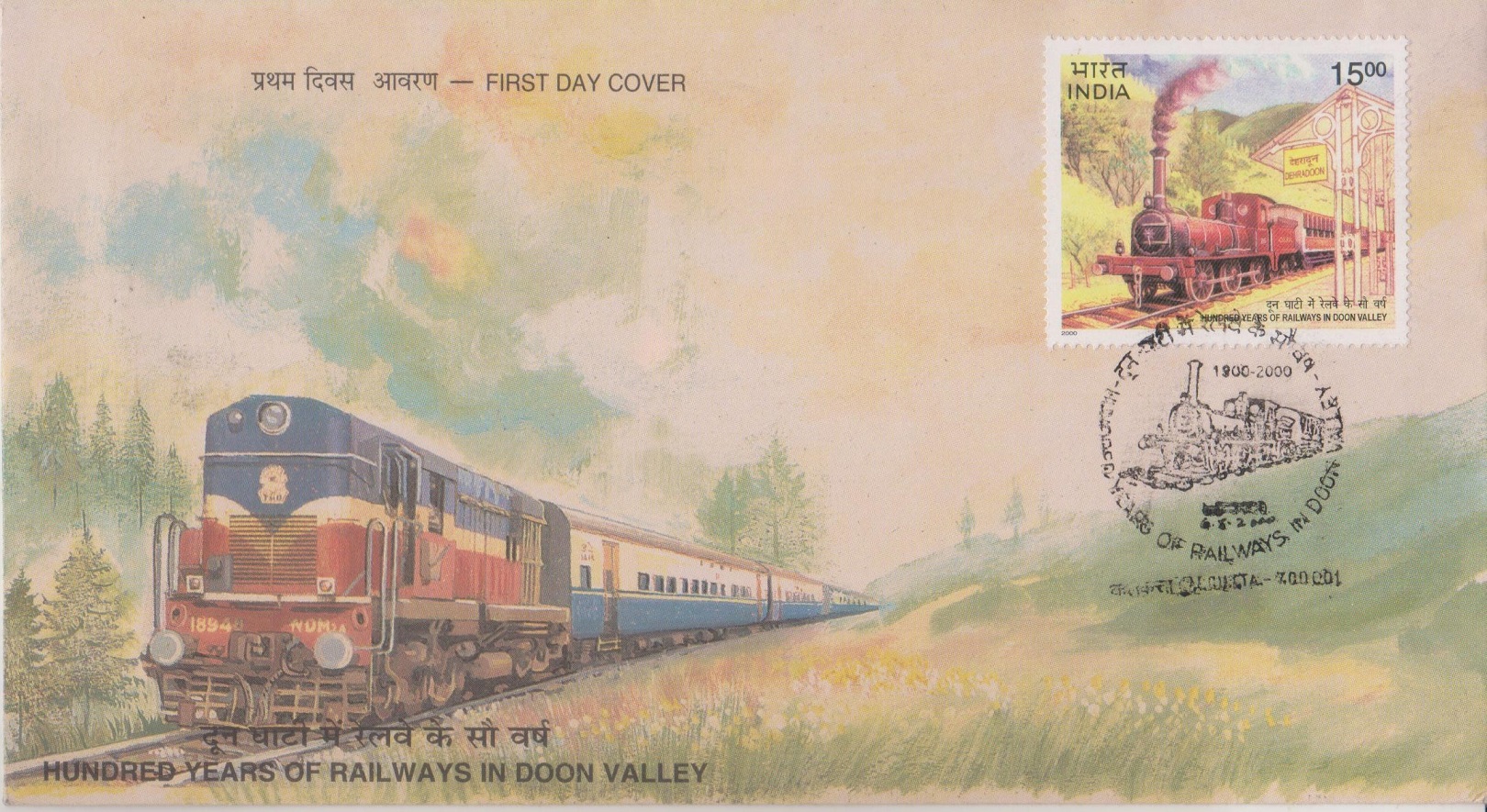 Issued by
Issued by